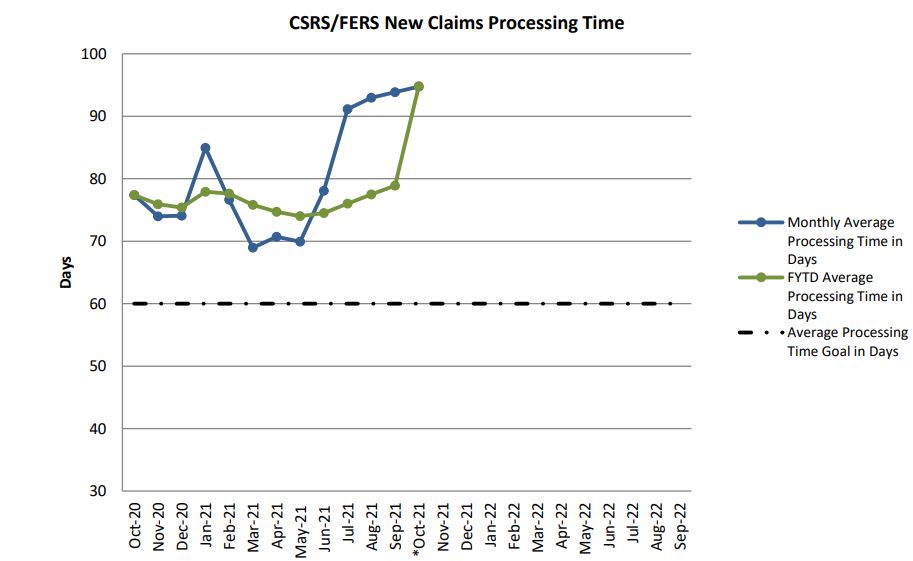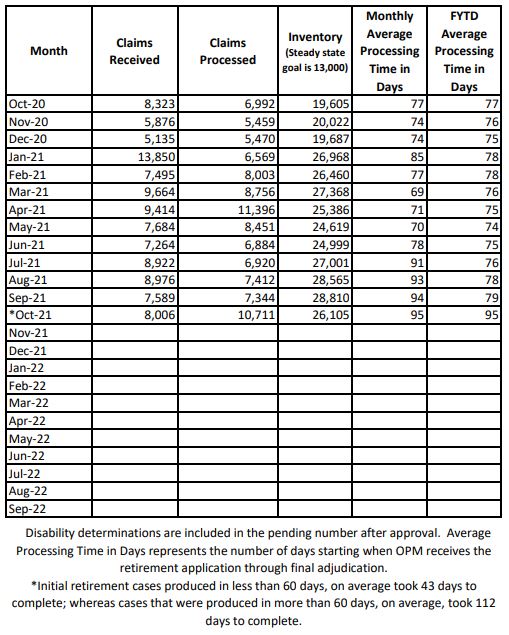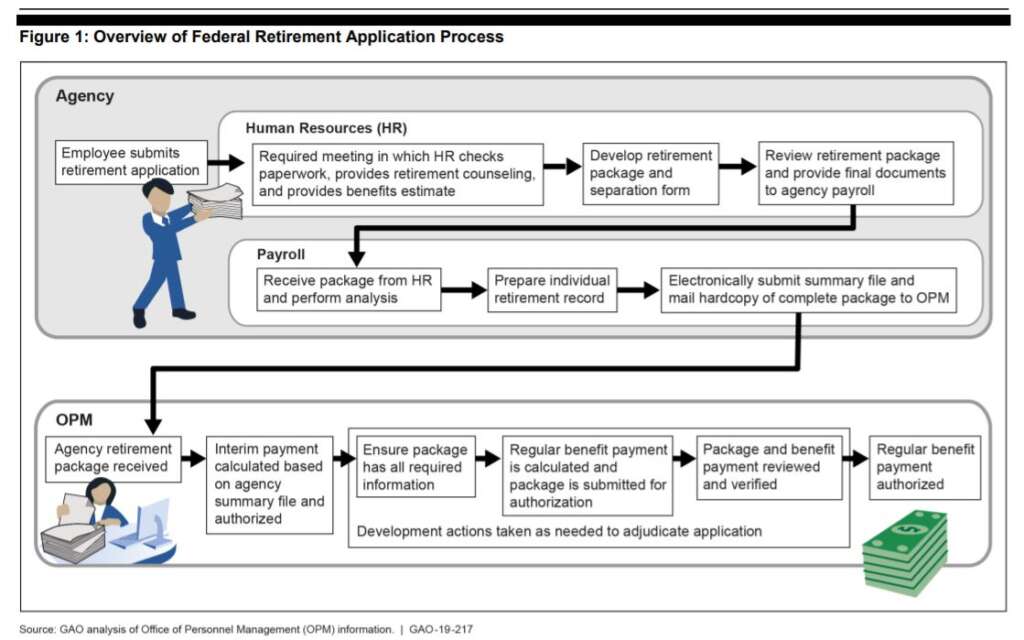Yearly processing times for federal retirement climb to record high
The fiscal year to date average processing time increased from 79 days to 95 days between September and October, which is the highest it's been for at least a year.
Processing times for federal retirement claims persistently increase at the Office of Personnel Management, although last month it was the yearly average that stood out. The fiscal-year-to-date average processing time increased from 79 days to 95 days between September and October, which is the highest it’s been for at least a year, according to newly released numbers from OPM.
The FYTD processing time for retirement claims has stayed within the 74-79-day range since October 2020, while the monthly average processing time was what showed a sudden spike over the summer. Back in July, the monthly average processing time jumped from 78 days to 91 days, and since then it has stayed firmly in the 90s. This is also the highest that rate has been for at least a year.

As for the backlog of claims, the total decreased about 9.4% from 28,810 in September, to 26,105 in October.
OPM received 8,006 new claims in October, up from 7,589 new claims received in September, and it processed 10,711 claims last month versus only 7,344 processed in September. Based on the latest numbers, last month saw the most claims processed since April, and it was about a 53.1% increase compared to October 2020.
OPM included as a disclaimer on processing times that “initial retirement cases produced in less than 60 days, on average took 43 days to complete,” and that cases produced “in more than 60 days, on average, took 112 days to complete” — almost three months.

In order for OPM to process retirement claims it needs certain information from agency payroll providers. In March, Federal News Network reported that the National Finance Center — one of the four major federal payroll providers — was experiencing major delays.
OPM’s retirement claims processing times were also the subject of a Government Accountability Office report in 2019 which said “the continuing reliance on paper-based applications and manual processing; insufficient staffing capacity, particularly during peak workload season; and incomplete applications” were root causes for processing delays.
That report also included an illustration of OPM’s process:

Copyright © 2024 Federal News Network. All rights reserved. This website is not intended for users located within the European Economic Area.
Amelia Brust is a digital editor at Federal News Network.
Follow @abrustWFED






